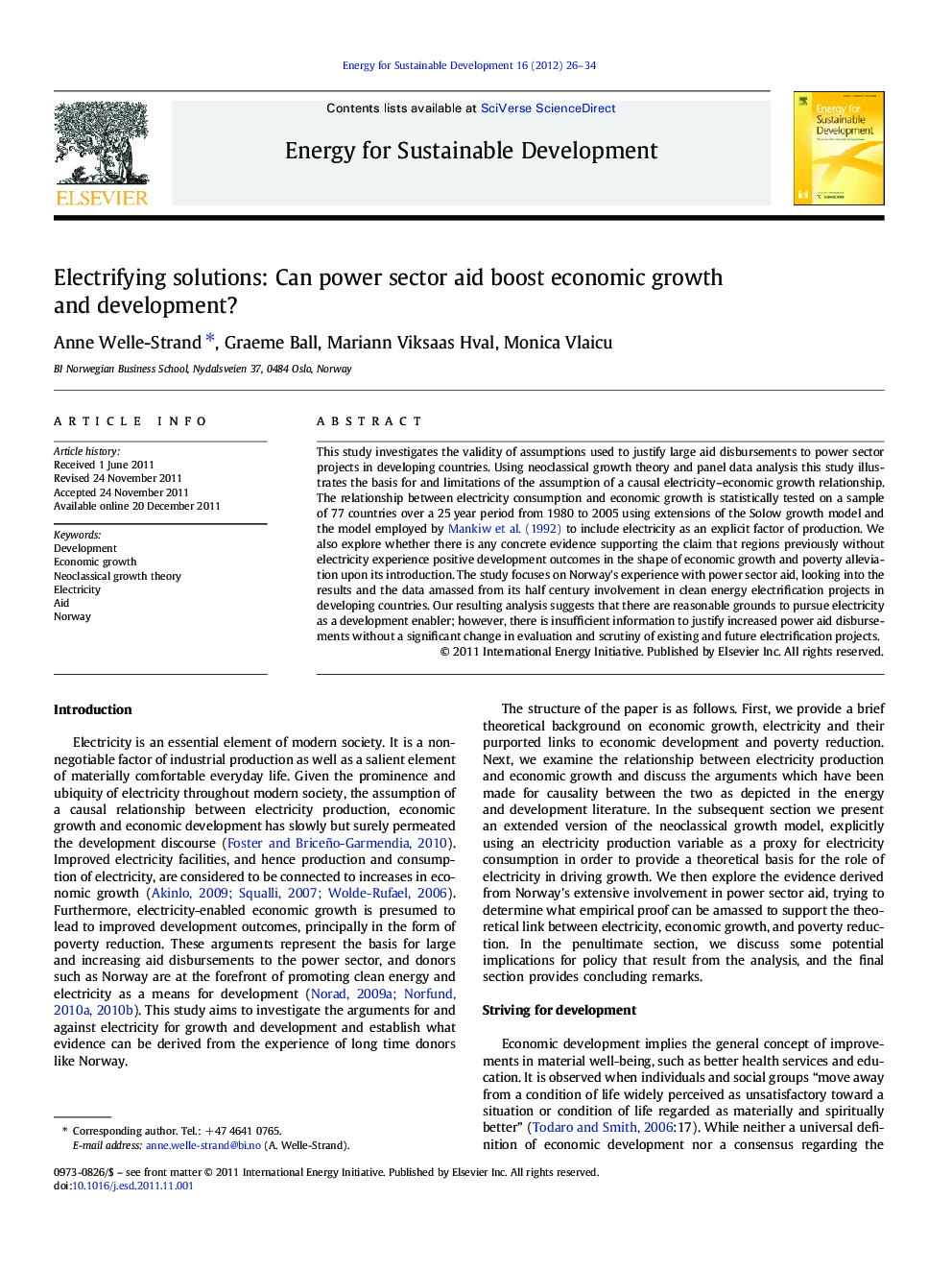| Article ID | Journal | Published Year | Pages | File Type |
|---|---|---|---|---|
| 1047260 | Energy for Sustainable Development | 2012 | 9 Pages |
This study investigates the validity of assumptions used to justify large aid disbursements to power sector projects in developing countries. Using neoclassical growth theory and panel data analysis this study illustrates the basis for and limitations of the assumption of a causal electricity–economic growth relationship. The relationship between electricity consumption and economic growth is statistically tested on a sample of 77 countries over a 25 year period from 1980 to 2005 using extensions of the Solow growth model and the model employed by Mankiw et al. (1992) to include electricity as an explicit factor of production. We also explore whether there is any concrete evidence supporting the claim that regions previously without electricity experience positive development outcomes in the shape of economic growth and poverty alleviation upon its introduction. The study focuses on Norway's experience with power sector aid, looking into the results and the data amassed from its half century involvement in clean energy electrification projects in developing countries. Our resulting analysis suggests that there are reasonable grounds to pursue electricity as a development enabler; however, there is insufficient information to justify increased power aid disbursements without a significant change in evaluation and scrutiny of existing and future electrification projects.
► We examine the underlying assumptions behind power sector aid disbursements. ► We statistically test the electricity–economic growth relationship. ► We examine Norwegian power aid for effects of electricity on growth and poverty. ► Our analysis indicates that electricity may enable economic growth, but no causality. ► Better evaluation of power aid is needed for insight into causality and efficiency.
